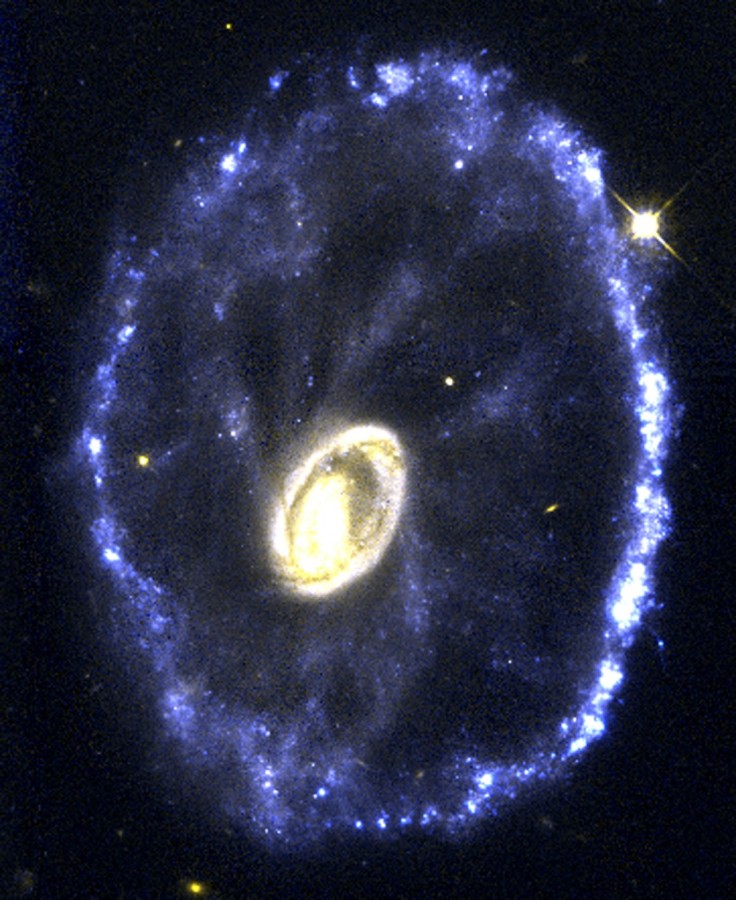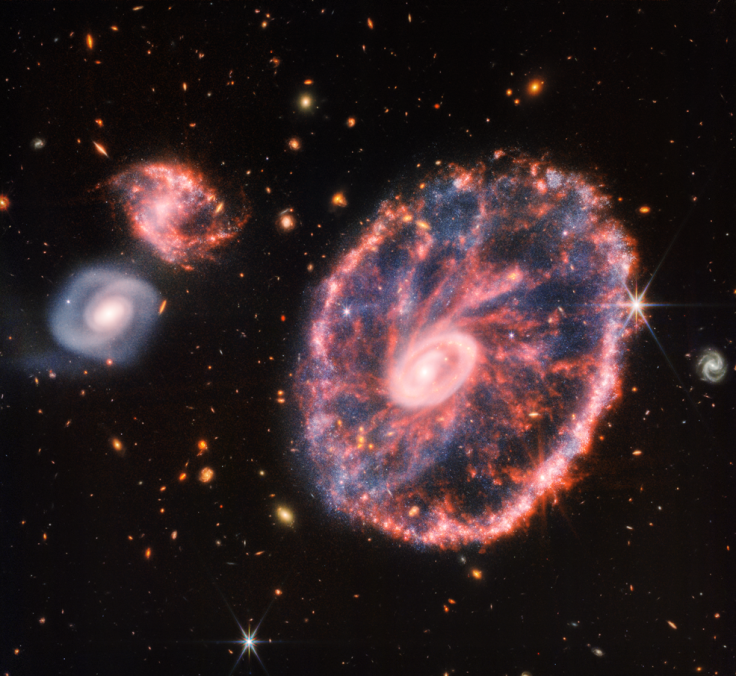The photo of the Cartwheel Galaxy you see below was taken from the Hubble Space Telescope in 1996.

While the picture looks a little bit grainy, no one can deny that it still looks specular.
And now, after more than 25 years, another telescope, this time more powerful, peeked again in the Cartwheel Galaxy.
James Webb Space Telescope
The James Webb Space Telescope, also known as JWST or Webb, is currently one of the most powerful observatories, which will be used to support thousands of astronomers all over the world, according to NASA.
It aims to investigate every phase of the evolution of our Universe, from the emergence of solar systems capable of supporting life on planets like Earth to the evolution of other galaxies in space.
How powerful is this space telescope?
Webb Captured a Photo of the Cartwheel Galaxy
The Hubble Space Telescope and other telescopes have previously analyzed the Cartwheel. However, due to the amount of dust obscuring the view, the fascinating galaxy has been wrapped in mystery.
However, Webb has just revealed additional information about the nature of the Cartwheel thanks to its capability to detect infrared light.
Below is the photo of the Cartwheel Galaxy that Webb photographed.

Webb's Mid-Infrared Instrument (MIRI) is required to investigate the galaxy's dust in greater detail, according to NASA. In this composite image, MIRI data is colored in red. It identifies regions of the Cartwheel Galaxy that are rich in hydrocarbons and other chemical compounds, as well as silicate dust, which is similar to much of the dust on Earth.
What Is Cartwheel Galaxy
Sculptor, a constellation 500 million light-years away, is where the Cartwheel Galaxy is located. The galaxy resembles a wagon wheel, as shown in the picture above.
The spoke-like structures are made up of wisps of material that connect the nucleus to the outer ring of young stars. Meanwhile, the bright object in the center is the galaxy's nucleus.
NASA said a nearly head-on collision with a smaller galaxy some 200 million years ago gave rise to the galaxy's peculiar configuration. Before the collision, the galaxy was probably a common spiral galaxy like the Milky Way.
While Webb gives us a view of the Cartwheel's present image, it also sheds light on what has previously happened to this galaxy and how it will possibly develop in the future.
This picture provides a new perspective on how the Cartwheel Galaxy has evolved over the course of billions of years.
The Cartwheel Galaxy is composed of two rings: a colorful outer ring and an eye-catching inner ring. This object is what astronomers refer to as a "ring galaxy," a type of structure that is less common than spiral galaxies like the Milky Way.
Star formation and supernovae account for the majority of the outer ring, which has been expanding for nearly 440 million years. This ring clashes with the surrounding gas as it expands, triggering star formation.









